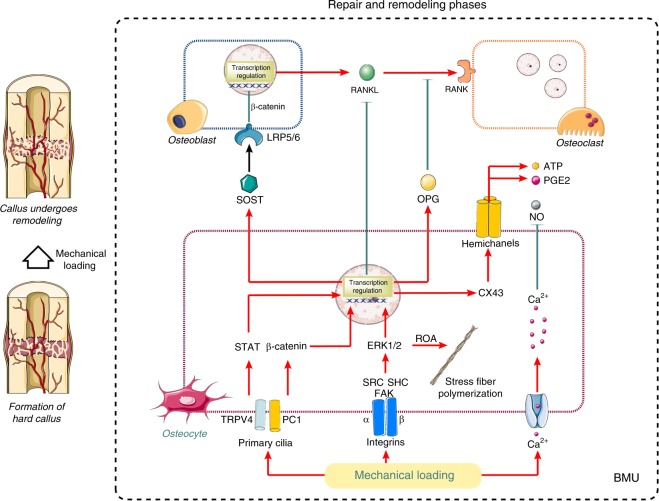Fig. 3.
Molecular basis of bone mechanosensation. The bone multicellular unit (BMU), which consists of osteocytes, osteoblasts, and osteoclasts, functions as a large mechanosensitive organ. Mechanical loading can be sensed by primary cilia, integrins, and Ca2+ channels on the surface of bone cells, then transcribed in the nucleus with inhibition of RANKL production and promotion of sclerostin and OPG. LRP5/6, low-density lipoprotein receptor-related protein 5/6; SOST sclerostin, RANKL receptor activator of nuclear factor kappa-B ligand, RANK receptor activator of nuclear factor kappa-B, OPG osteoprotegerin, ATP adenosine triphosphate, PGE2 prostaglandin E2, NO nitric oxide, CX43 connexin-43, STAT signal transducer and activator of transcription, ERK1/2 extracellular signal-regulated kinase1/2, ROA replication origin activator, TRPV4 transient receptor potential cation channel subfamily V member 4, PC1 polycystin 1, SRC proto-oncogene tyrosine-protein kinase Src, SHC Shc-transforming protein, FAK focal adhesion kinase, BMU bone multicellular unit. “Red” refers to upregulation; “Green” refers to downregulation

